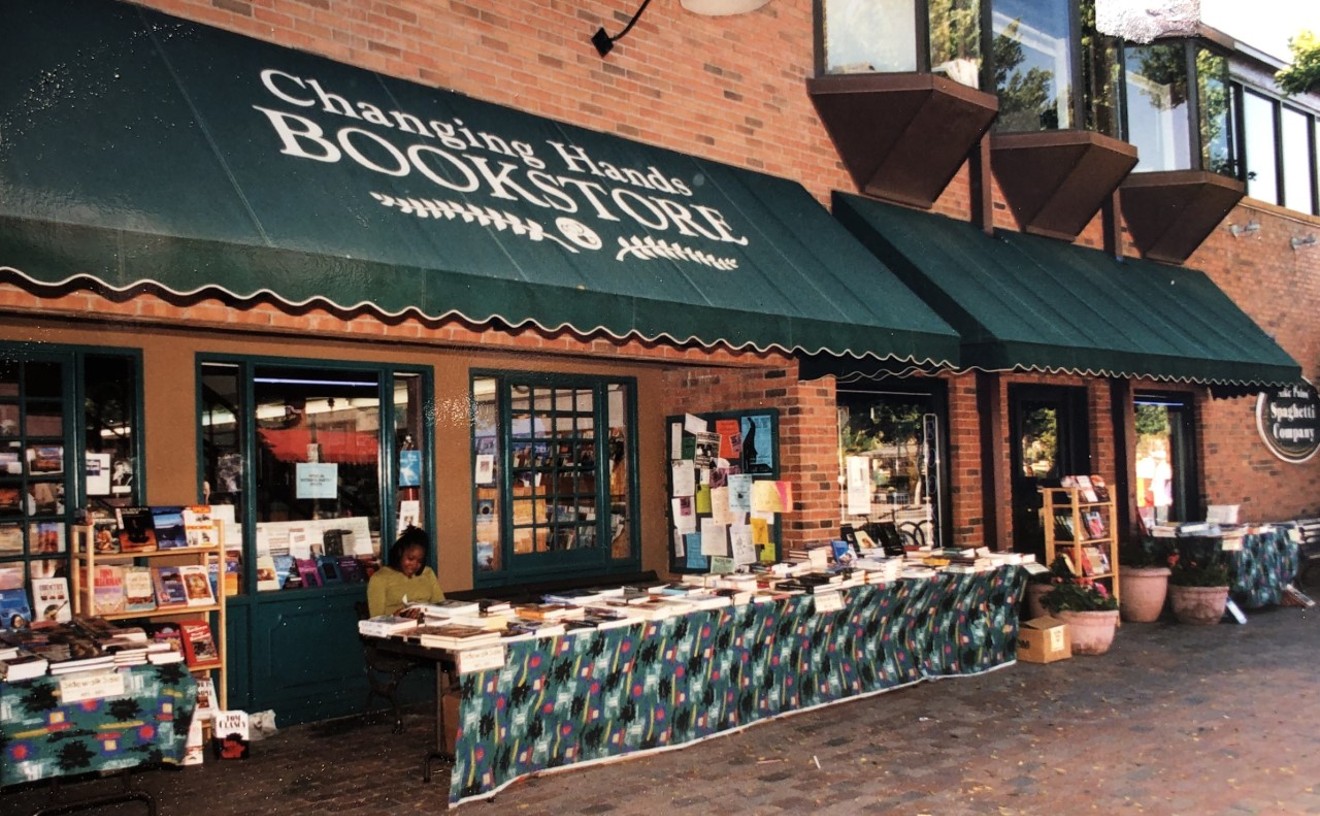Art Lab 16 still exists, performing at various venues, but this was its farewell show a few years ago at what had been its own space. A young man stoically wrote the same text, over and over, on pitch-black chalkboards like he was Bart Simpson doing penance for something bad he did at school. A single camcorder documented his steady progress, and evidence of the taping was in clear view: a haphazard pile of VHS tapes was testament to the hours of repetitive activity. Not right away, but later it struck me that the show had captured the dogged perseverance of local artists who face huge obstacles getting their work seen and appreciated.
Today, the space at 515 East Roosevelt, under the simple moniker 515 Gallery, houses another group of dedicated but underappreciated artists, a cooperative.
Whenever I visit an alternative space like 515, I expect to see an uneven mix of things. Some pieces will no doubt be trendy. Other work will appear rushed, or unfinished. But any reservations I had about the quality of work at the latest 515 show vanished when I noticed Brad Konick's latest exhibition.
Konick has created an installation, "The Shimmering In Between," using sculpture, multimedia forms, and painted walls that creates an otherworldly whole. The focus of the work is a series of four teardrop-shaped constructions set against a worn red floor. The raw substance is mundane -- Konick's shaped the egglike pieces from sections of dry wall, turning the commonplace construction material into something mysterious. Hollowed out and painted gold inside, the shapes are positioned in an arc of increasing size. The effect is mesmerizing.
Near the door, there's a skeletal frame of wood with sand inside which evokes the character of a coffin, or more intriguing, a set of ribs emerging from the fine gravel. The walls -- painted, it appears, with a sponge -- and a wooden panel that seems to hang in midair add to the room's total effect. Step in it, and you feel like you're entering another realm.
Konick achieves this effect with the wise placement of only a few things. If art is about transformation, Konick has succeeded brilliantly. No need to read lengthy and incomprehensible artists' statements, or take a course in contemporary art theory to "get" the work. Konick has invested enough care in his installation that one can simply look at it and come away with an appreciation for what he has accomplished.
Discussing his work, Konick, 36, is relaxed, and seems fully aware of what he is doing and why. He resembles a young Francesco Clemente, with short-cropped black hair and the look of a working artist in faded tee shirt and timeworn shorts. The native Phoenician returned to Arizona last year after a decade in San Francisco. In the early 1990s, he showed his work in various alternative spaces, 11 East Ashland downtown in particular. But he's only recently begun showing again locally on a regular basis.
"I find working with mundane materials challenging," he says, echoing one of his principal artistic influences, the master of contemporary minimalist sculpture, Martin Puryear. The graduate of ASU's College of Art and Architecture and Environmental Design has turned his training in architecture into a focus on materials and structure. "Every day, I let the process try to convey to me what [the work] wants to be," he says. Instead of having a concrete goal, he lets the materials become part of his creative process -- and when he says that, I'm reminded of Michelangelo, who said that he "liberated" figures from marble.
Shaping dry wall, Konick says, is his way of discovering something deep within human nature. I'm not sure if he's found it, but he's right when he says he's created a calming place for meditation, where myriad interpretations of what he's done are possible. "It's like leaving the front door open," he says.










